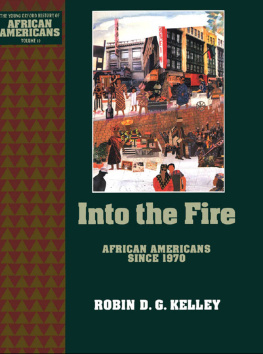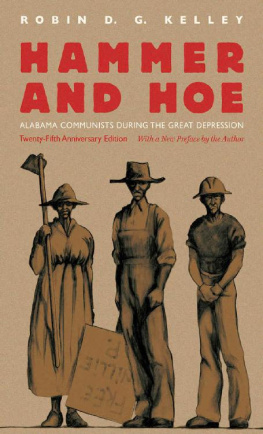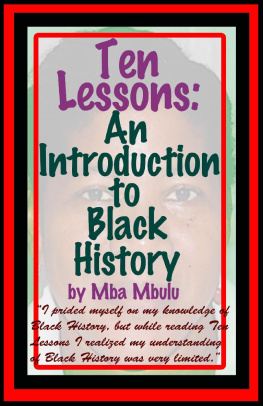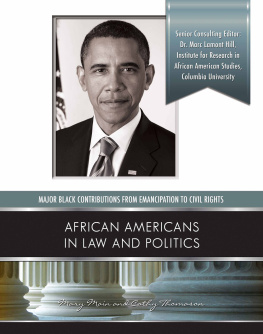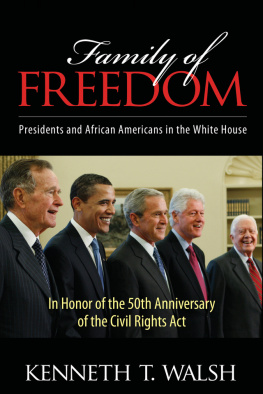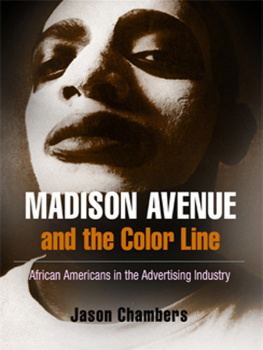Into the Fire
AFRICAN AMERICANS
SINCE 1970


Robin D. G. Kelley and Earl Lewis
General Editors
Into the Fire

AFRICAN AMERICANS
SINCE 1970
ROBIN D. G. KELLEY

Elleza
This ones for you!
Love, Daddy

Oxford New York
AthensAucklandBangkokBombay
CalcuttaCape TownDar es SalaamDelhi
FlorenceHong KongIstanbulKarachi
Kuala LumpurMadrasMadridMelbourne
Mexico CityNairobiParisSingapore
TaipeiTokyoToronto
and associated companies in
BerlinIbadan
Copyright 1996 by Robin D. G. Kelley
Introduction Copyright 1996 by Oxford University Press, Inc.
Published by Oxford University Press, Inc.,
198 Madison Avenue, New York, New York 10016
Oxford is a registered trademark of Oxford University Press
All rights reserved. No part of this publication may be reproduced, stored in a retrieval system, or transmitted, in any form or by any means, electronic, mechanical, photocopying, recording, or otherwise, without the prior permission of Oxford University Press.
Design: Sandy Kaufman
Layout: Leonard Levitsky
Picture research: Lisa Kirchner, Laura Kreiss
Library of Congress Cataloging in Publication Data
Kelley, Robin D. G.
Into the fire : African Americans since 1970 / by Robin D. G. Kelley
p.cm.(Young Oxford history of African Americans ; vol. 10)
Includes bibliographical references and index.
ISBN 0-19-508701-1 (library ed. ); ISBN 0-19-508502-7 (series, library ed.)
1. Afro-AmericansHistory1964Juvenile literature. I. Title. II. Series: Young Oxford history of African Americans : vol. 10
E185.615.K37 1995
973.0496073dc20 95-6627
CIP
On the cover: Fabrics of 125th Street, collage by Allen Stringfellow
Frontispiece: Three black men salvage what remains of a burned-down building in Newark, New Jersey, on a cold November day in 1989.
Page 9: Detail from The Contribution of the Negro to Democracy in America, (1943) by Charles White, 119 173
Hampton University Museum, Hampton, Virginia.
CONTENTS

ROBIN D. G. KELLEY AND EARL LEWIS
THE REVOLUTION CONTINUES
ROBIN D.G. KELLEY
EARL LEWIS
W hen a situation went from bad to worse, elders would sometimes say it fell out of the frying pan and into the fire. This timeless phrase succinctly captures what has happened to the majority of African Americans since the 1970s. Of course, when the 1960s came to a close most black people were surprisingly optimistic. The civil rights movement had made remarkable gains, and many people believed that the black power movement might achieve for African Americans the self-determination they had been seeking for the past three centuries. And there were some stunning victories, especially in the arena of electoral politics. Several major cities elected black mayors, African-American representation in Congress increased significantly, and a black man named Jesse Jackson actually became a serious contender for the Presidency. As corporate board rooms became slightly more integrated and black college-educated professionals moved to newly built suburban homes, the black middle class expanded. Thus a handful of African Americans escaped the frying pan altogether.
The majority were not so lucky. The period after 1970 was marked by economic changes that had negative effects on black workers: the disappearance of heavy industry, the flight of American industry to foreign lands, and the loss of jobs for millions of workers across the country. Permanent unemployment and underemployment became a way of life for many. Only a few years after Lyndon Johnsons War on Poverty had been declared a victory in the late 1960s, the number of black poor began to grow dramatically. And despite the increased presence of African Americans in political office, city services declined, federal spending on cities dried up, affirmative action programs were dismantled, blatant acts of racism began to rise again, and the United States entered a deep economic recession.

Black-on-black violence, along with poverty, joblessness, crime, and racial discrimination, has been one of the most pressing issues facing black urban communities since 1970. This poster, pasted on a Detroit storefront in 1993, publicizes a play about the rising homicide rate among young black men.
Economic decline, poverty, and rising racism in the post-segregation age is only part of the story. This volume also tells the story of how an increasingly diverse and always complicated black community resisted oppression; struggled for power; dealt with internal tensions, conflicts, and differences; and profoundly shaped American culture. It examines, among other things, the rebirth of black nationalism; the rise of a new black conservative movement (called neoconservatism); the challenge of black feminism; the impact of Caribbean immigration on African-American communities; the increase of interethnic tensions; and the roots of rap music and hip-hop culture.
Unlike most other history books, parts of Into the Fire might be recognizable to many young readers. After all, they have lived through many of these events, some of which have become part of their memories. Yet, there are many things contained in these pages that will not be familiar at all, for this book attempts to weave together our public memory with stories that have been hidden from view. It is the kind of book that will challenge and be challenged by readers of all ages. And we hope that it will convince young people that they have the power to determine the outcome of chapters yet to be written.
This book is part of an 11-volume series that narrates African-American history from the 15th through the 20th centuries. Since the 1960s, a rapid explosion in research on black Americans has significantly modified previous understanding of that experience. Studies of slavery, African-American culture, social protest, families, and religion, for example, silenced those who had previously labeled black Americans insignificant historical actors. This new research followed a general upsurge of interest in the social and cultural experiences of the supposedly powerless men and women who did not control the visible reins of power. The result has been a careful and illuminating portrait of how ordinary people make history and serve as the architects of their own destinies.
This series explores many aspects of the lives of African Americans. It describes how blacks shaped and changed the history of this nation. It also places the lives of African Americans in the context of the Americas as a whole. We start the story more than a century before the day in 1619 when 19 negars stepped off a Spanish ship in Jamestown, Virginia, and end with the relationship between West Indian immigrants and African Americans in large urban centers like New York in the late 20th century.

